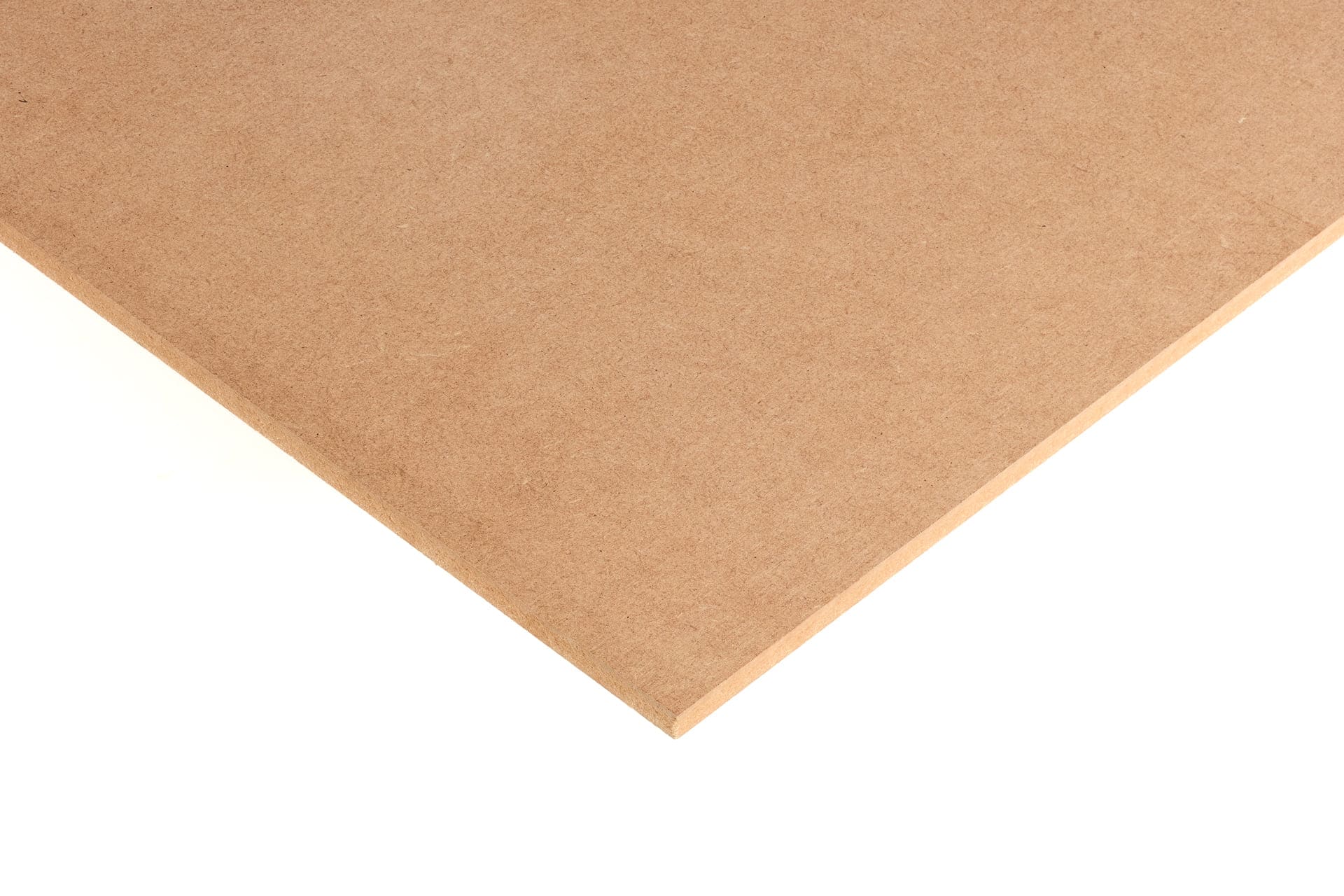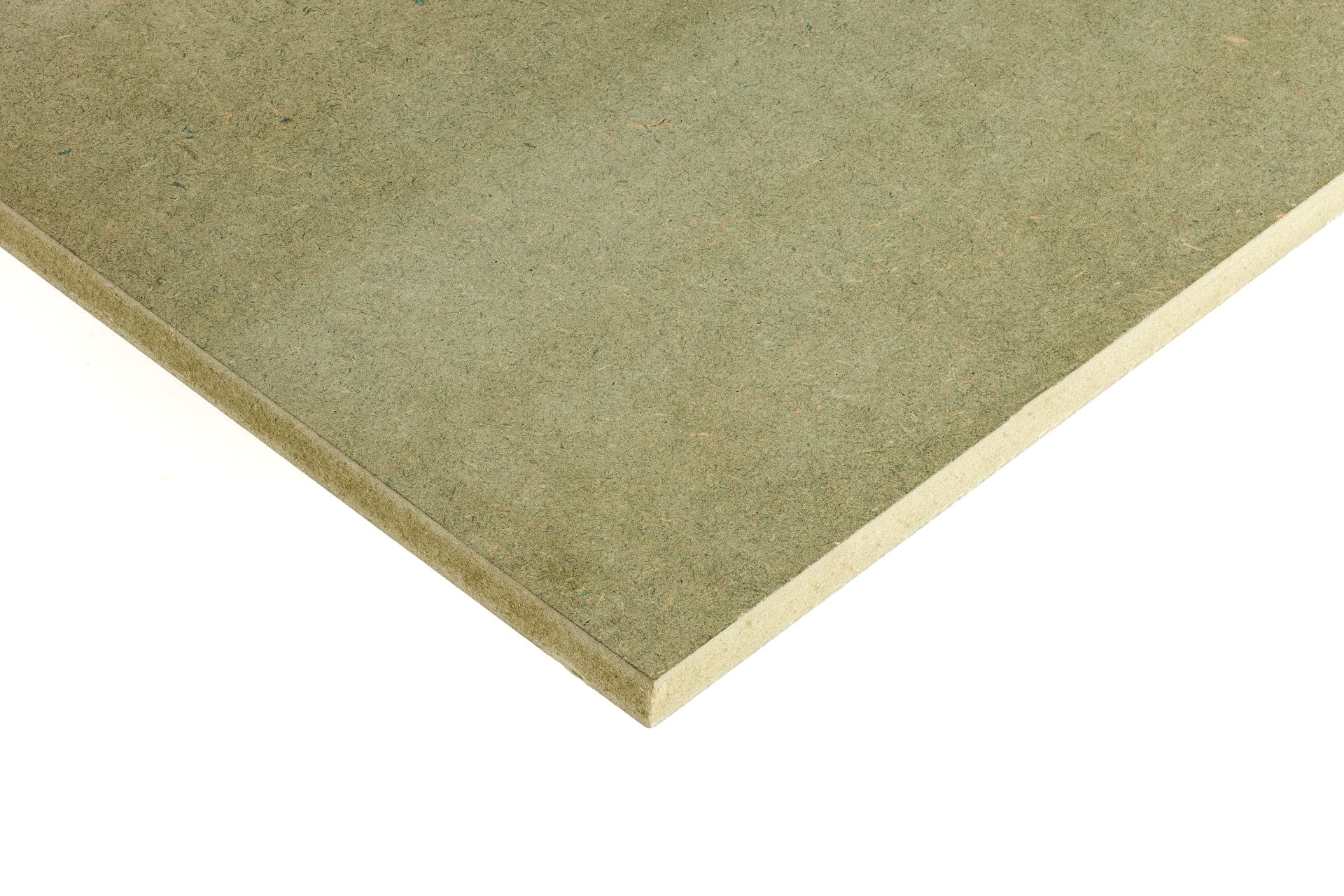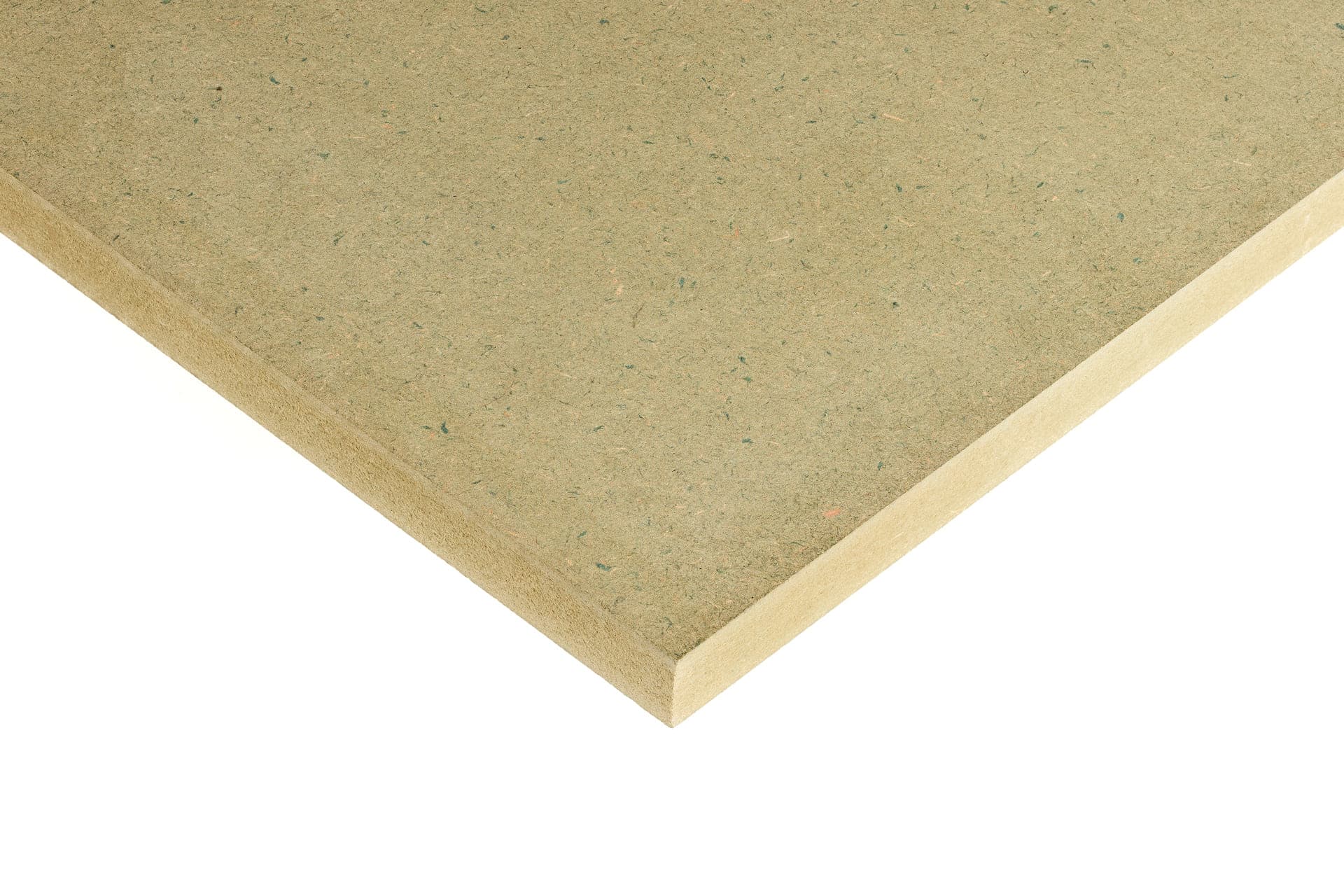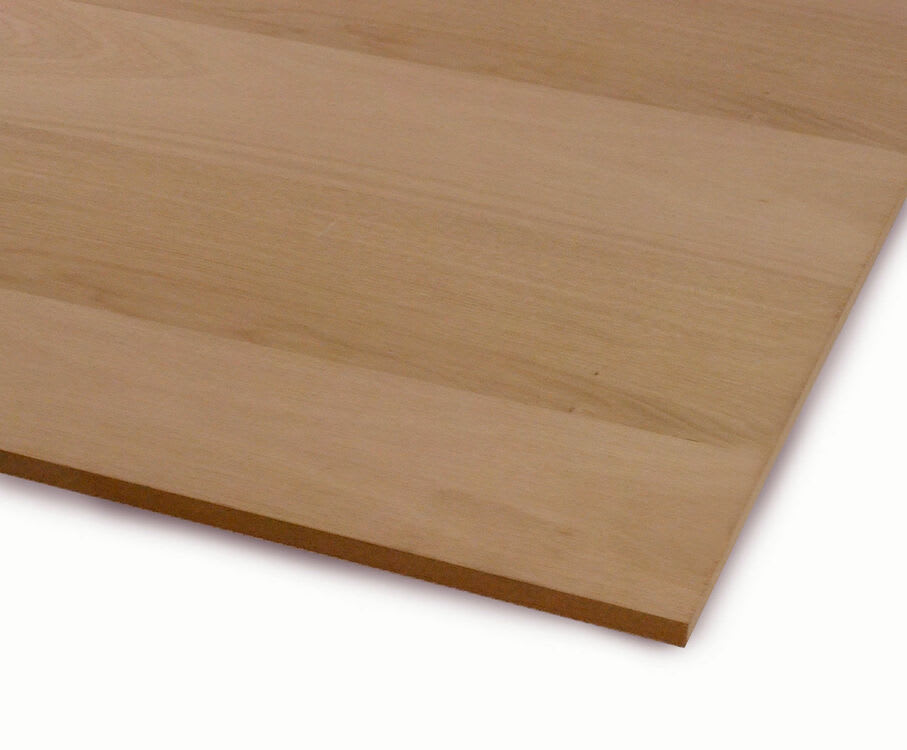MDF Board
(29 Products)MDF board is an engineered sheet material known for its smooth finish and versatility. Favoured by large furniture manufacturers such as IKEA, MDF tends to be adopted in non-structural applications where aesthetic appearance is a priority, making it perfect for the manufacture of furniture and other items that require an unblemished end product.
We sell a huge and growing range of MDF panels of varying thicknesses from Moisture Resistant MDF to Veneered MDF.
What is MDF Board?
Medium Density Fiberboard (MDF) is a highly versatile and dependable wood-based composite material that has become a cornerstone in various industries.
Crafted from wood fibres and adhesive resin, MDF is renowned for its uniform density and smooth, flat surface, making it an ideal choice for a wide array of applications.
MDF's adaptability knows no bounds, serving as a go-to material for woodworking and construction projects alike - from crafting custom cabinets and furniture to creating intricate designs and durable shelving.
Its exceptional affinity for paints, veneers, and finishes allows craftsmen to bring their creative visions to life with precision and ease.
Beyond its remarkable versatility, MDF also aligns with environmental conscientiousness. Produced from responsibly sourced wood fibres and free from harmful chemicals, it embodies sustainability without compromising on quality.
Types of MDF
What is MDF Board Used For?
As a highly versatile building and carpentry material, it may come as no surprise that there are a wide number of uses for MDF.
MDF can be used as panels for walls or flooring but its primary use is in both carpentry and furniture building. This is due in large part to the fact that the material's density allows it to be easily worked with machines and because it boasts a smooth sanded surface and a precision finish.
In short, MDF is the ideal solution for the majority of domestic and interior applications.
Let's check its most common applications and internal uses:
- Furniture
- Flooring
- Doors
- Windows
- Frames
- Shelving
- Cabinets
- Internal joinery
- Architectural mouldings
- Wall panelling
MDF panels are also used in the creation of shop counters and shop fittings, as well as being one of the main components used by large furniture manufacturers such as IKEA. To no surprise, Swedish furniture giant is the largest user of MDF sheets worldwide.
Key Features and Benefits of MDF
- Uniform Density: MDF offers consistent thickness and density, ensuring reliability in various applications.
- Smooth Surface: Its flat, smooth surface is perfect for painting, veneering, or laminating.
- Durability: Resistant to warping, cracking, and splitting, ensuring long-lasting projects.
- Versatility: Suitable for custom cabinets, furniture, shelving, and intricate designs.
- Easy to Work With: Machining and finishing MDF is straightforward, making it DIY-friendly.
- Environmentally Friendly: Crafted from responsibly sourced wood fibres and free from harmful chemicals.
- Cost-Effective: Provides the appearance of premium wood at a fraction of the cost.
- Customisable: Accepts paints, stains, and finishes for a personalised touch.
- Multiple Size Options: Available in various sizes to accommodate your specific project needs.
Frequently Asked MDF Board Questions
What Are The Benefits Of Using MDF Over Real Wood?
MDF offers many benefits, perhaps the most significant of these is that MDF sheet does not have any natural defects associated with standard wood such as knots, kinks, grains or whorls. It is, therefore, much easier to cut into various shapes and sizes without distortion or warping.
This makes for much more reliable work and saves time and material wastage during the building process.
Is MDF Waterproof?
Although Standard MDF is not generally waterproof, we sell a water-resistant version that is designed to offer moisture resistance in areas of high humidity such as the bathroom or kitchen.
It is important to stress here, that water-resistant MDF is not a waterproof board; it is merely resistant to water and moisture. Therefore, it may be best to use a different material when doing work on exterior areas that are prone to be caught in the elements.
Due to the process that goes into making it, our water-resistant MDF boards are all dyed green. This also instantly helps to visually differentiate it from the non-water-resistant boards that we sell, which are a beige colour. Water-resistant MDF is ideal for making bathroom cabinets or shelving and can be easily painted to match the colour scheme.
How Much Does MDF Board Cost?
Prices vary depending on the thickness and whether or not you are looking for it to have water resistance. We have MDF for sale at some of the best prices you will find online, for delivery straight to your door.
What Are The Differences Between MDF Wood & Plywood?
As a supplier of many sheet materials, we are often asked to compare MDF to other sheet materials.
MDF is an excellent material for use in furniture and most indoor applications, due to the way it has been made. It is easily workable with machines and tools and is especially useful in carpentry and cabinet making.
Plywood, chipboard and OSB don’t have the smooth finish of MDF and are not as pliant or easy to shape into furniture and shelving.
Here are some more considerations:
- It is generally more cost-effective to build with MDF rather than plywood
- MDF's smooth surface makes it ideal for painting and decorative finishes
- MDF is consistent and easy to work with - cut edges run smooth and won’t splinter
- MDF boards are generally denser and offer more strength than plywood or particle board.
- Due to the smooth edges, you can use a router to form decorative edges and detailed designs (such as scrolled or scalloped designs) with simple use of a scroll saw or jigsaw
Can MDF Be Painted?
MDF can indeed be painted and it is very versatile in this regard, which makes it ideal for furniture and carpentry products. It is a major reason why furniture giants like IKEA make such use of it in their products.
The best way to paint MDF is to first coat it in a solvent-based primer of your choice, as this will help the paint adhere to the surface. Once this is done, you can then add the paint - easy.
Is MDF Fire Resistant?
There are particular types of fire retardant or fire-rated MDF boards on the market but standard MDF and the water-resistant MDF which we sell do not fall into that category.
Fire-rated MDF is used in internal non-structural applications and is given a safety rating based on how fire-resistant it is.
It is often used in wall linings, display panels and partitions. The majority of MDF sheets for sale will not be fire-resistant and if this is what you are looking for, we suggest that you examine the available information carefully to ensure you are getting what you want.
Is MDF Environmentally Friendly?
Due to the fact that MDF is made from recycled materials, it is a highly sustainable material. MDF is manufactured primarily from wood fibres, shavings and other "off-cuts" of wood that usually would be discarded.
Is MDF Easy To Work With?
MDF is actually pretty easy to work with. You can cut it, drill it, and sand it just like you would with any other piece of wood. It's also easy to paint or stain. The main downside to MDF is that it's not very good at resisting moisture. If it gets wet, it can swell and warp. That's why you'll usually see it used in indoor applications.
Despite its drawbacks, MDF is still a very popular material. It's affordable, it's easy to work with, and it looks good when it's finished.


























